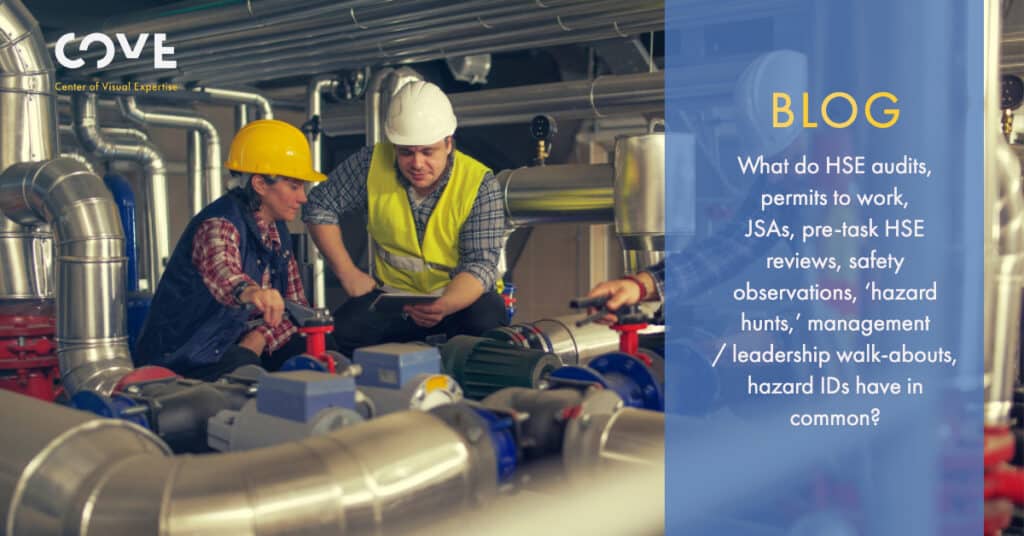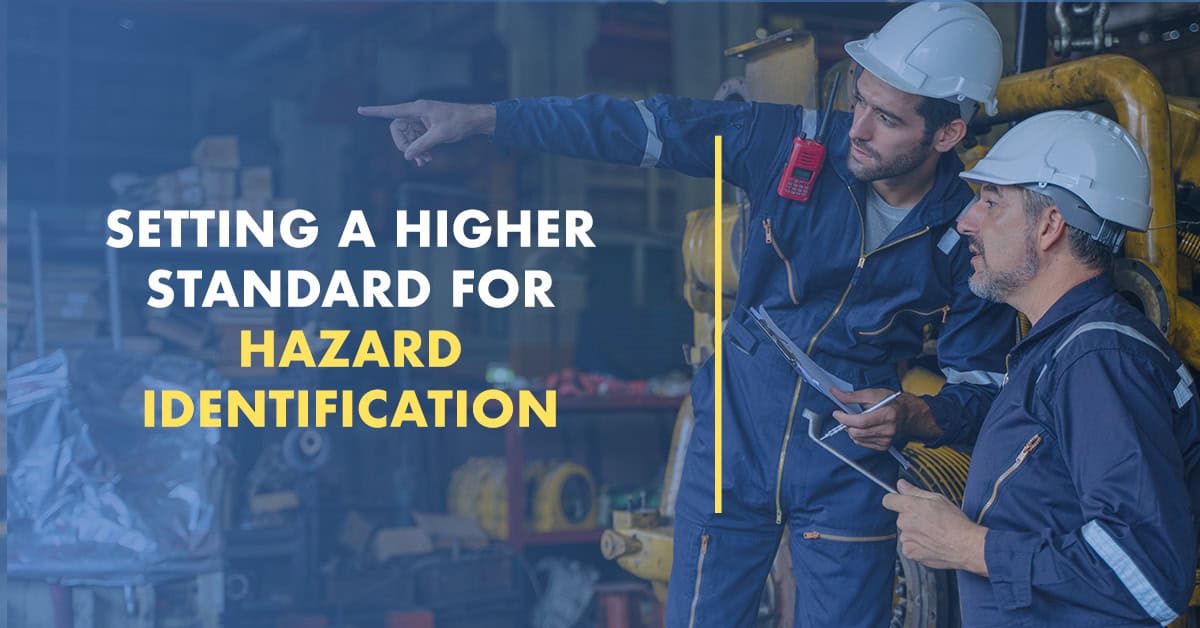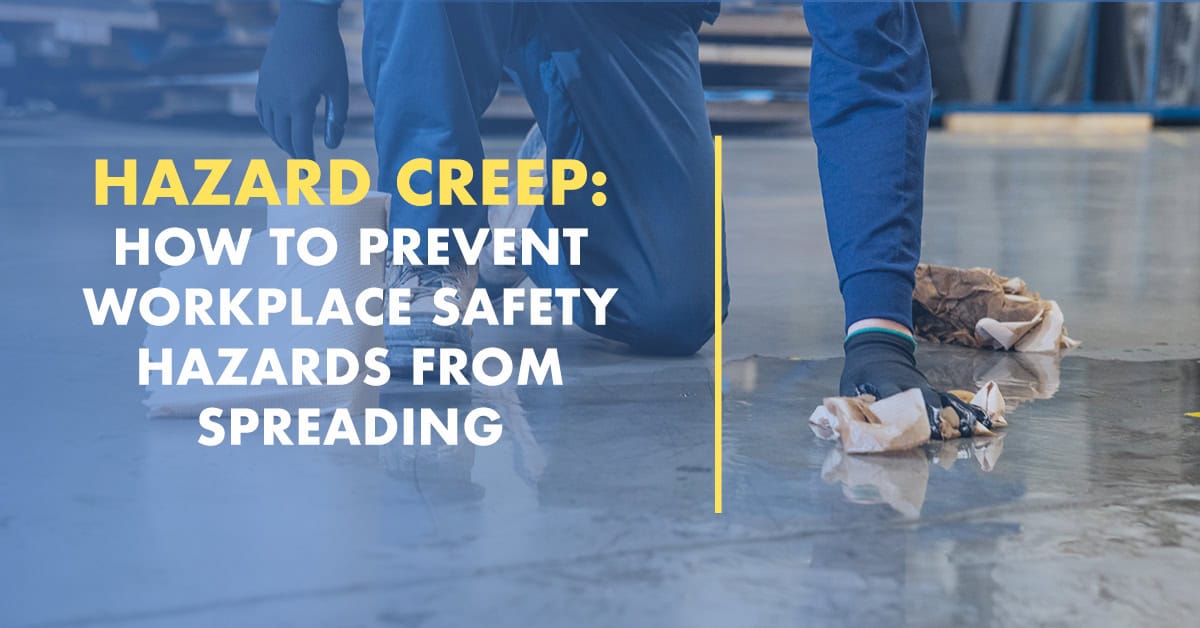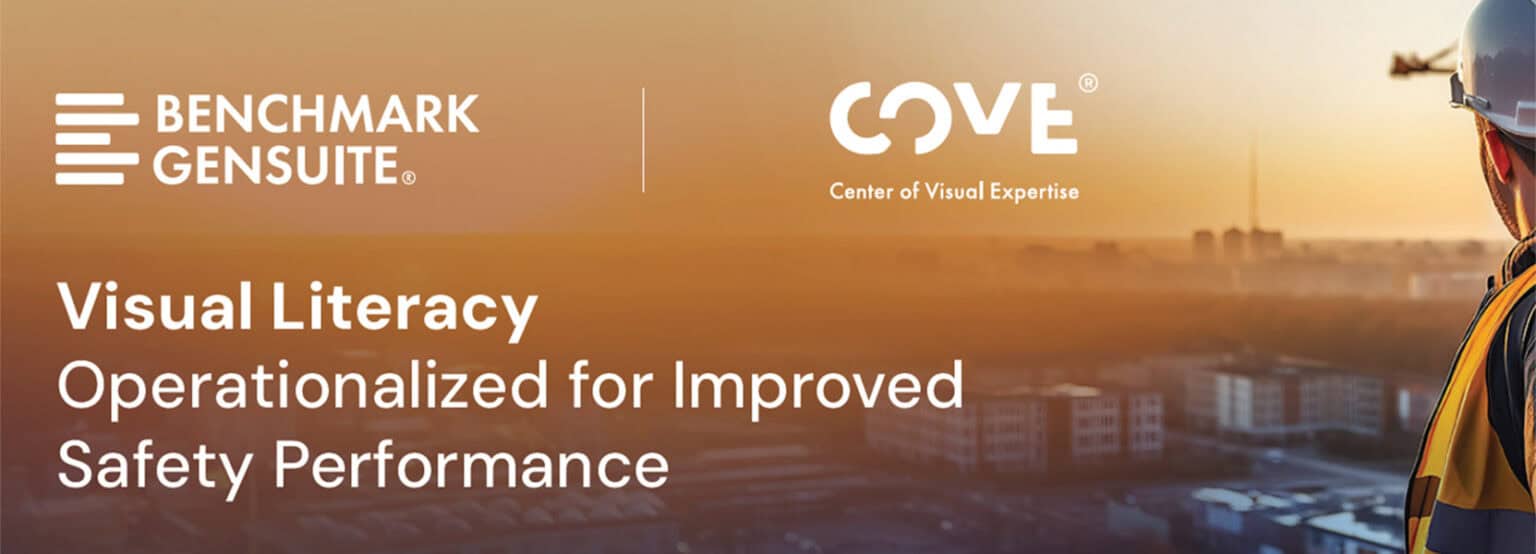HSE audits, permits to work, job safety analyses (JSAs), pre-task HSE reviews, safety observations, ‘hazard hunts,’ management / leadership walk-abouts, hazard IDs, . . . what do all of these ‘tools,’ or processes, have in common? While it is not a complete listing, it does represent a subset of widely-used and generally accepted tools used by organizations to help manage HSE risk on an ongoing day-to-day basis. The tools used by your organization may have different names and take slightly different forms, but you probably recognize them all and likely rely greatly on them to help manage HSE risk in your operations.
But what else do they have in common? Each and every one of these tools, and many more like them, are heavily dependent on the ability of the people who use them to effectively see the situation, the scenario, the workplace environment, etc. Taking in this visual information, interpreting it, and ultimately leading to some sort of action (or inaction) on the part of the person or the organization.
We routinely educate and train our workforce–and usually repeat on a refresher basis–on hazard recognition, risk perception, risk analysis techniques, field PPE requirements, and the proper way to complete the requisite forms and checklists, i.e., how to use the tools we listed previously. But do we commonly educate and train our workforce about how to effectively see? Do we take seeing for granted? After all, don’t we begin to see as soon as we open our eyes for the first time?
Well, research and the experts in the field of Visual Literacy tell us that seeing is actually a learned behavior. We don’t really see with our eyes. We see with our brain. Our brain tells our eyes what to look at, where to look, what to look for, how long to look at it, etc. So . . . if seeing is a learned behavior, can we learn how to do it better, more effectively, and improve with practice? Yes, we can.
Those same researchers also tell us that we don’t all necessarily see the same things, the same way, or interpret them in the same way. What we see, how we see it, and what it means to us is often shaped or influenced by unconscious biases established over our lifetimes by past experiences, our education, our culture, background, etc.
Therefore, doesn’t it follow that this common set of tools and processes on which we rely so heavily for addressing day-to-day HSE risk could be even more effective if we were able to equip our workforce–executives, managers, first line supervisors, technicians, the people who use those tools–with skills to more effectively see? What potential risks are we missing when we ‘look at’ a job site, or walk through the workplace? What biases are influencing what each of us sees and how we see it? How can these factors impact the effectiveness of our all-important HSE day-to-day risk management toolkit?
COVE: Center of Visual Expertise, can assist by providing learning workshops to help organizations and their people understand the difference between ‘looking’ and really seeing, and the fundamentals underlying the concepts associated with Visual Literacy. But more importantly, COVE offers unique tools and techniques to build a new and improved skillset for workers at all levels in the organization. Helping build skills to better see the entire picture, techniques to interpret and communicate about what we are seeing, and concepts that can be easily integrated into your existing tools and processes.
So . . . no matter what specific HSE risk management tools or processes you have in your toolkit, or what you call them in your organization, COVE can help you make them even better by providing the knowledge, skills, and techniques to help your workforce see more effectively.
Join us for an upcoming Foundations of Visual Literacy workshop to learn skills that help you see more.




